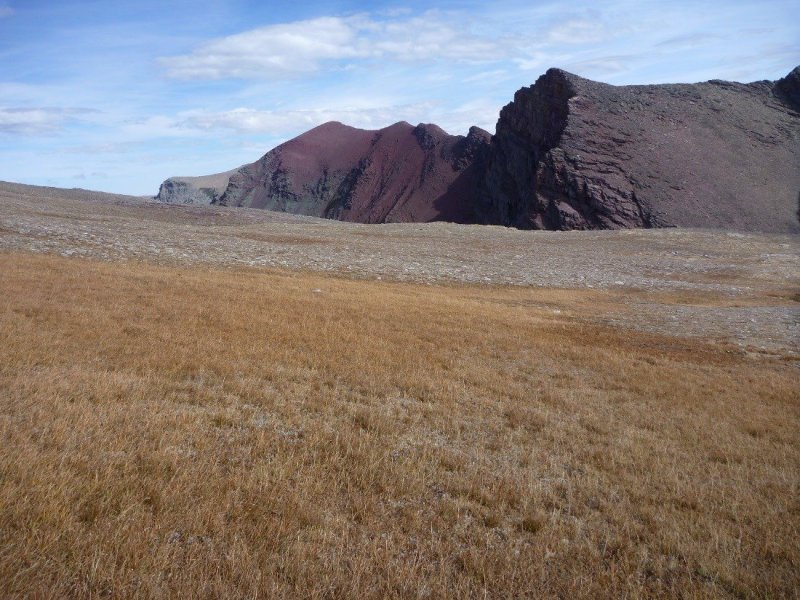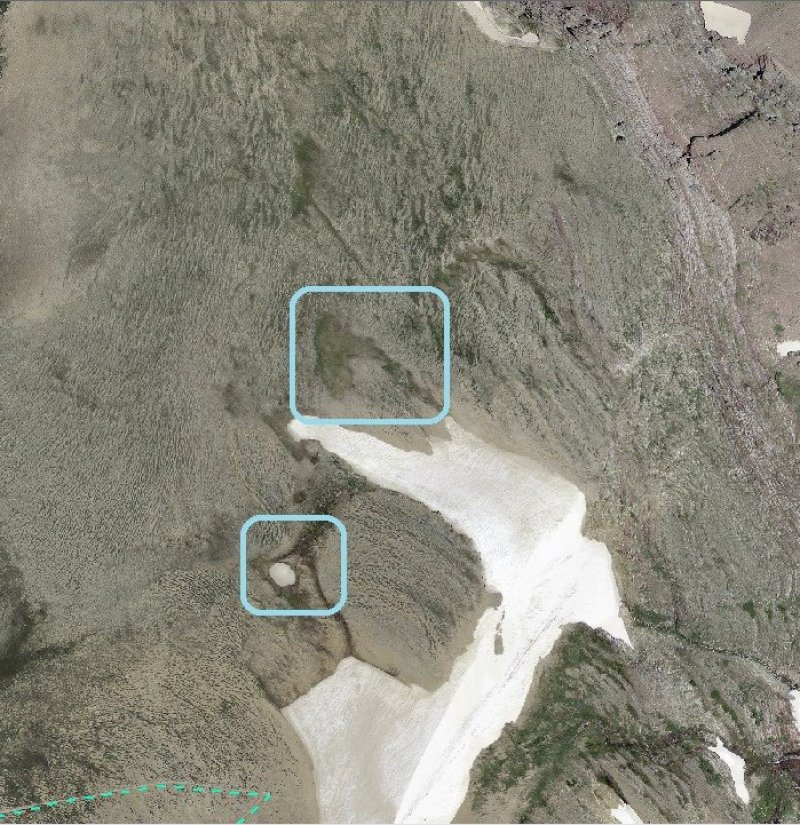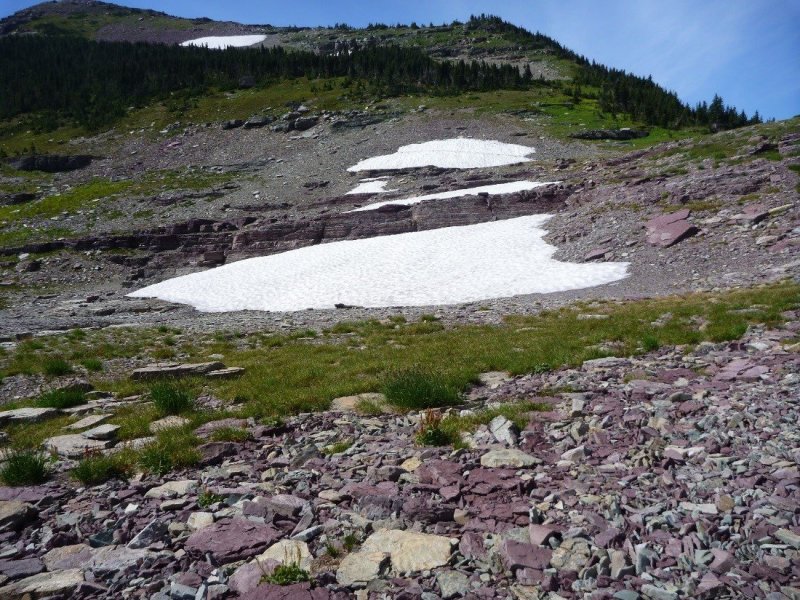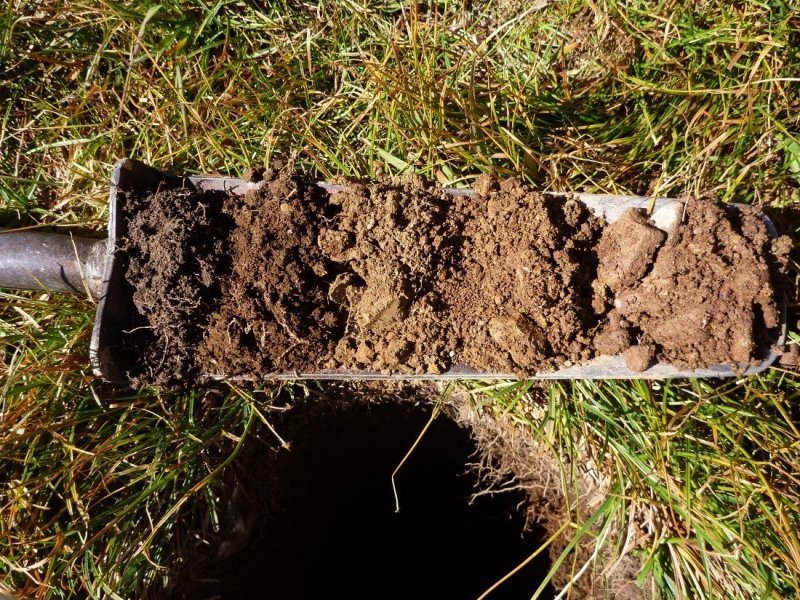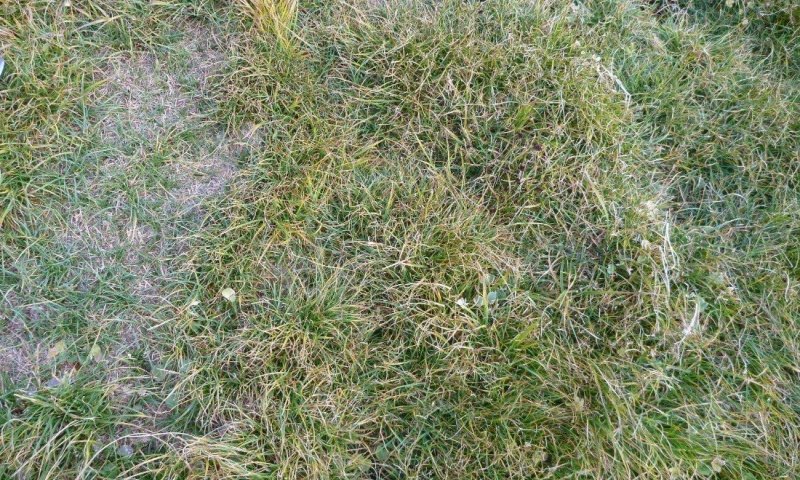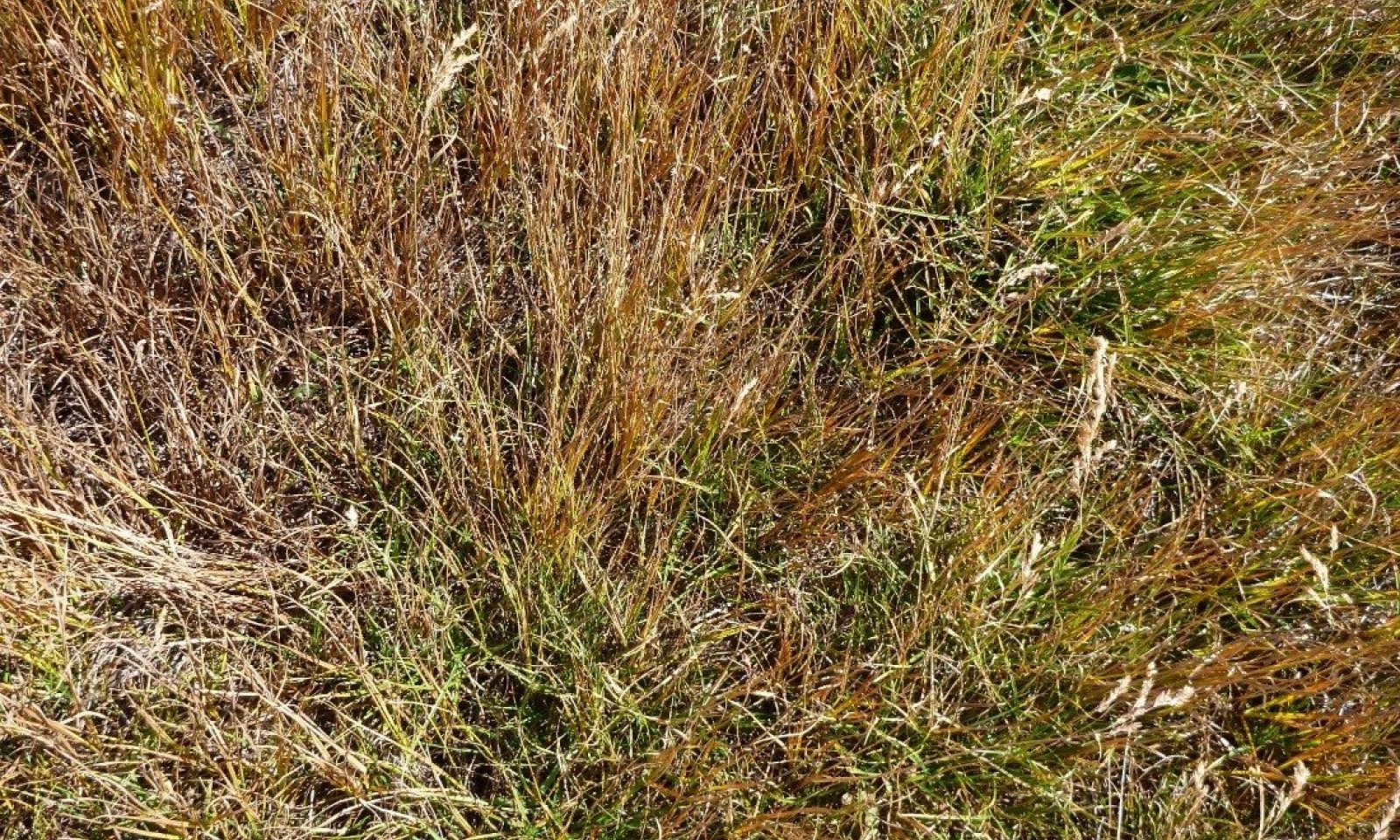

Natural Resources
Conservation Service
Ecological site R043AX979MT
Alpine Nivation Hollow Payson’s sedge / black alpine sedge -northern singlespike sedge / Drummond’s rush (Carex paysonis/ Carex nigricans-Carex scirpoidea/ Juncus drummondii)
Last updated: 9/08/2023
Accessed: 04/02/2025
General information
Provisional. A provisional ecological site description has undergone quality control and quality assurance review. It contains a working state and transition model and enough information to identify the ecological site.
MLRA notes
Major Land Resource Area (MLRA): 043A–Northern Rocky Mountains
This MLRA is located in Montana (43 percent), Idaho (34 percent), and Washington (23 percent). It makes up about 31,435 square miles (81,460 square kilometers). It has no large cities or towns. It has many national forests, including the Okanogan, Colville, Kootenai, Lolo, Flathead, Coeur d’Alene, St. Joe, Clearwater, and Kaniksu National Forests.
This MLRA is in the Northern Rocky Mountains Province of the Rocky Mountain System. It is characterized by rugged, glaciated mountains; thrust- and block-faulted mountains; and hills and valleys. Steep-gradient rivers have cut deep canyons. Natural and manmade lakes are common.
The major Hydrologic Unit Areas (identified by four-digit numbers) that make up this MLRA are: Kootenai-Pend Oreille-Spokane (1701), 67 percent; Upper Columbia (1702), 18 percent; and Lower Snake (1706), 15 percent. Numerous rivers originate in or flow through this area, including, the Sanpoil, Columbia, Pend Oreille, Kootenai, St. Joe, Thompson, and Flathead Rivers.
This area is underlain primarily by stacked slabs of layered sedimentary or metasedimentary bedrock. The bedrock formations range from Precambrian to Cretaceous in age. The rocks consist of shale, sandstone, siltstone, limestone, argillite, quartzite, gneiss, schist, dolomite, basalt, and granite. The formations have been faulted and stacked into a series of imbricate slabs by regional tectonic activity. Pleistocene glaciers carved a rugged landscape that includes sculpted hills and narrow valleys filled with till and outwash. Continental glaciation over road the landscape in the northern half of the MLRA while glaciation in the southern half was confined to montane settings.
The average annual precipitation is 25 to 60 inches (635 to 1,525 millimeters) in most of this area, but it is as much as 113 inches (2,870 millimeters) in the mountains and is 10 to 15 inches (255 to 380 millimeters) in the western part of the area. Summers are dry. Most of the precipitation during fall, winter, and spring is snow. The average annual temperature is 32 to 51 degrees F (0 to 11 degrees C) in most of the area, decreasing with elevation. In most of the area, the freeze-free period averages 140 days and ranges from 65 to 215 days. It is longest in the low valleys of Washington, and it decreases in length with elevation. Freezing temperatures occur every month of the year on high mountains, and some peaks have a continuous cover of snow and ice.
The dominant soil orders in this MLRA are Andisols, Inceptisols, and Alfisols. Many of the soils are influenced by Mount Mazama ash deposits. The soils in the area have a frigid or cryic soil temperature regime; have an ustic, xeric, or udic soil moisture regime; and dominantly have mixed mineralogy. They are shallow to very deep, are very poorly drained to well drained, and have most of the soil texture classes. The soils at the lower elevations include Udivitrands, Vitrixerands and Haplustalfs. The soils at the higher elevations include Dystrocryepts, Eutrocryepts, Vitricryands , and Haplocryalfs. Cryorthents, Cryepts, and areas of rock outcrop are on ridges and peaks above timberline
This area is in the northern part of the Northern Rocky Mountains. Grand fir, Douglas-fir, western red cedar, western hemlock, western larch, lodgepole pine, subalpine fir, ponderosa pine, whitebark pine, and western white pine are the dominant overstory species, depending on precipitation, temperature, elevation, and landform aspect. The understory vegetation varies, also depending on climatic and landform factors. Some of the major wildlife species in this area are whitetailed deer, mule deer, elk, moose, black bear, grizzly bear, coyote, fox, and grouse. Fish, mostly in the trout and salmon families, are abundant in streams, rivers, and lakes.
More than one-half of this area is federally owned and administered by the U.S. Department of Agriculture, Forest Service. Much of the privately-owned land is controlled by large commercial timber companies. The forested areas are used for wildlife habitat, recreation, watershed, livestock grazing, and timber production. Meadows provide summer grazing for livestock and big game animals. Less than 3 percent of the area is cropland.
LRU notes
This ecological site resides in MLRA 43A in the Livingston-Lewis-Apgar Mountains which includes the bulk of Glacier National Park (GNP) and the lower western valley portions along the Flathead River. The landscape is mountains and landforms include glaciated mountains with associated features such as U-shaped valleys, mountain slopes, alpine ridges, cirques, valley floors and moraines. Glaciation of this area was in the form of alpine, icecaps and valley outlet glaciers. It also includes associated alluvium and outwash features. This area includes low valleys to tall mountains with elevation ranging 989-2,762 m (3,250-9,050 ft.). The climate is cold and wet with mean annual air temperature of 3 degrees Celsius (37 degrees F)., mean frost free days of 65 days and mean annual precipitation of 1,295 mm (51 in.) and relative effective annual precipitation is 169 cm (66 in.). The soil temperature regime is cryic and the soil moisture regime is udic. The geology of this area is dominated by metasedimentary rocks of the Belt Supergroup (Grinnell argillite and Siyeh limestone) with minor Tertiary sediments. Soils are generally weakly developed on mountain slopes within U-shaped valleys. Parent materials are commonly of colluvium, till, and residuum from metasedimentary rocks. Limestone bedrock within this part of the Belt Supergroup is not highly calcareous and due to high precipitation received in this area most carbonates at mid and upper elevations have been leached from the soil profiles. Bedrock depth varies greatly with location, landform and slope position. Volcanic ash is often found in the soil surface with various degrees of mixing. Thicker volcanic ash can be found on more stable positions on mid and upper elevation slopes that are protected from wind erosion. Volcanic ash is not typically found in low elevation areas on stream and outwash terraces associated with streams and rivers. There are numerous large lakes including St. Mary, Bowman, Kintla, Lake Sherburne, Logging, Upper Waterton and numerous creeks (
Classification relationships
NPS Plant Community Name:
Carex nigricans-Sibbaldia procumbens Herbaceous Vegetation
Carex paysonis-Sibbaldia procumbens Herbaceous Vegetation
Ecological site concept
Ecological Site Concept
This ecological site is found in the alpine life zone, on backslope, footslope and toeslope positions on cirque ridge landforms in the mountains, on all aspects, with low to moderate slopes (8-15 percent) at elevations ranging 1,850 to 2,450 meters (6,070-8,040 feet). A Nivation hollow is defined as a shallow, non-cliff depression or hollow on a mountainside permanently or intermittently occupied by a snowbank or snow patch (Wysocki, 2009). The landscape position is a concave bowl shaped depressional area that holds snow far longer than the surrounding areas that resides on a slope. This long duration of snow cover protects the vegetation in winter from harsh winds found at these high elevations. The deep snow cover melts out in spring releasing a pulse of water to the vegetation, and the concave landscape positions collect moisture from surrounding areas which provides resilience against late summer dry conditions. There is no substantial ponding of this site due to the well-drained soils. Vegetation at the site has a simple structure of extremely dense, low-growing sedge turf with a few snow-tolerant forb species. The vegetation is dominated by one to two mat-forming sedges including Paysons sedge (Carex paysonis), black alpine sedge (Carex nigricans), and northern singlespike sedge (Carex scirpoidea). The soils associated with this ecological site are extremely gravelly throughout the soil profile, with very gravelly loam surface textures and loamy-skeletal subsurface textures. Soil parent material is colluvium over residuum from metasedimentary Belt Supergroup rocks. Due to slope gradients and drainage characteristics there is no flooding or ponding at this site.
Associated sites
| R043AX971MT |
Alpine Solifluction Terrace Dryas octopetala (Arctostaphylos uva-ursi/Salix arctica) The 43A Alpine Solifluction Terrace ecological site is found at high elevations 1,700-2,600 m (5,575-8,530 ft.) on ridges or backslopes in the mountains or cirque floors mainly on northern or western aspects of moderate to steeper slopes (10-40 percent). Due to frost heave action, solifluction terraces have developed, in which there is a sorting of gravels and vegetation into stripes. . The 43A Alpine solifluction terrace ecological site has soils that are moderately deep, well drained, and very gravelly in the surface and subsurface. The highest expression of this site has areas of alternating strips covered by vegetation and rock terracing which has low to moderate vegetation cover. The 43A Alpine Solifluction Terrace ecological site has a reference vegetation community of eightpetal mountain-avens (kinnikinnick-arctic willow-moss campion-twinflower sandwort)/alpine smelowskia-cutleaf daisy-alpine bistort/curly sedge. |
|---|
Table 1. Dominant plant species
| Tree |
(1) Carex nigricans |
|---|---|
| Shrub |
Not specified |
| Herbaceous |
(1) Sibbaldia procumbens |
Click on box and path labels to scroll to the respective text.
